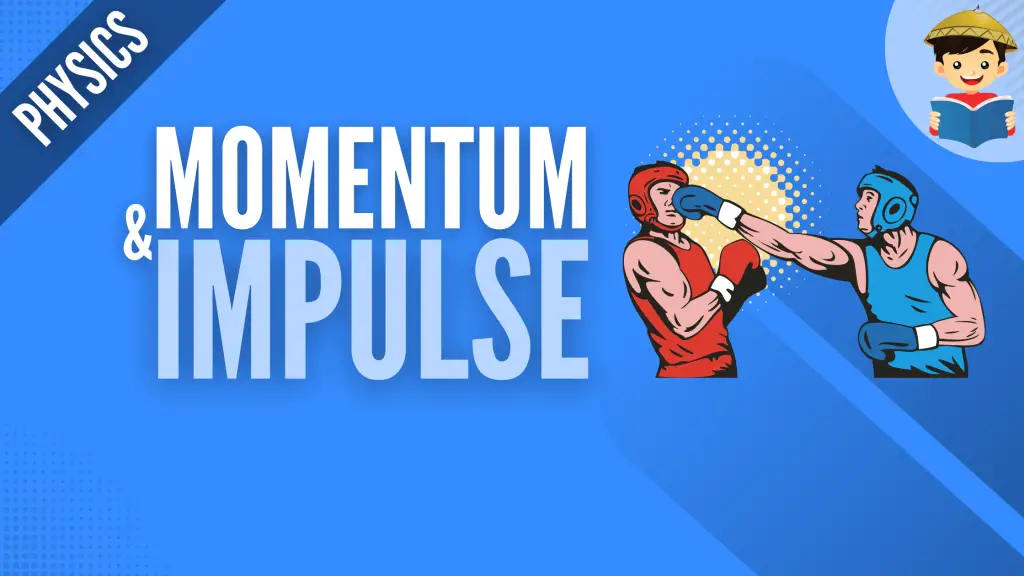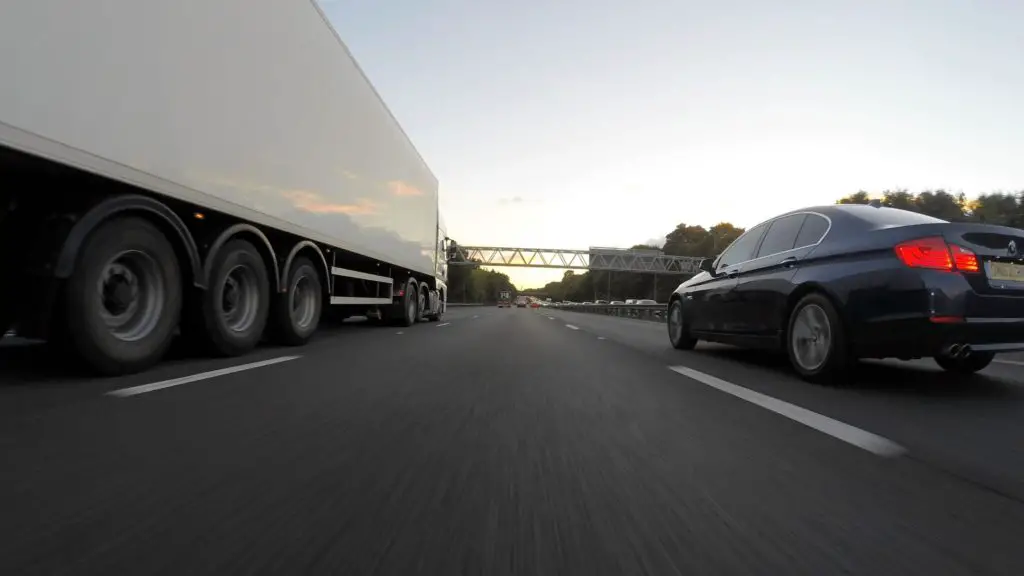Momentum and Impulse

In Physics, we view moving objects differently. Through mathematical equations, we can break them down into smaller components and understand things that are not visible to the naked eye. This reviewer will help you define, understand, and appreciate the principles of momentum and impulse as seen through the lens of science.
Click below to go to the main reviewers:
Table of Contents
- What Are Momentum and Impulse?
- Sample Problems with Solutions
- Conservation of Momentum
- Collision
- Download Article in PDF Format
- Test Yourself!
What Are Momentum and Impulse?

1. Momentum
We all know by now that it is more difficult to stop a 10-wheeler truck than a small car that moves at the same speed.
Why do you think so?
If you think that it is because of their mass, then you are right. However, if the speed of the small car is so much greater than the speed of the truck, that would be a different scenario.
We usually state that the 10-wheeler truck is harder to stop because it has greater momentum. Momentum is defined as the product of the mass of the object and its velocity.
Mathematically,
p = mv
where p = momentum, m = mass of the object, and v = velocity.
We can see from the equation that the momentum of an object is proportional to the object’s mass and velocity. In other words, changing the mass and increasing or decreasing the velocity will affect the momentum.
In our first example, since the objects move at equal speed, the object that is more massive (in this case, the 10-wheeler truck) has greater momentum. Objects that are less massive can have greater momentum, too, if it moves at a very high speed (e.g., a bullet).
2. Impulse
In motion, the velocity of the object usually changes instead of its mass. We know that the change in velocity causes acceleration. The force causes acceleration, so we can therefore say that the greater the force applied, the greater the change in velocity would be, thus, the greater the momentum.
However, we should also consider the amount of time the force acts. Say, for example, you push a box for 2 seconds, applying a change in its momentum. You stop to drink water, then apply the same force and push the same box again for 10 seconds. This time, you produced a greater change in its momentum.
Both force and time are important quantities to change momentum. The change in momentum is known as an impulse. This can be derived using Newton’s second law of motion.
We know that from the second law of motion,
F = ma
We also know that a = Δv/t, so
F = mΔv/t
Rearranging the equation, we will get
Ft = mΔv
where Ft = impulse.
This equation can be applied if the system’s mass is constant; otherwise, Ft = Δmv.
From this equation, we can say that the greater the impulse is, the greater the change in momentum will be.
Sample Problems with Solutions
Let us see examples where (Problem 1) the impulse is related to an increasing momentum, (Problem 2) decreasing momentum over a longer period, and (Problem 3) decreasing momentum over a shorter period.
Problem 1 (Ball)
Which has a greater momentum: a ball that is hit once with a large force or a ball that is hit repeatedly?
Solution
We know that the greater the impulse, the greater the change in momentum will be. A ball that is hit once has a lesser impulse than a ball that is hit repeatedly.
Hitting the ball over and over again extends the time of contact, which results in increased momentum.

Take note that F = mΔv/t; hence, for the same mass and change in velocity, force is inversely proportional to the time. When looking for an object with greater momentum, we must consider the amount of force applied and the time of contact. If you want an object to increase its momentum, apply the greatest amount of force you can over a long period.
Our next two examples will focus on the decreasing momentum over a longer and shorter period.
Problem 2 (Car accident)
Your car has lost its brakes, and you must choose between hitting a tree or a bunch of haystacks. What will you choose and why?
Solution
Choice A: Tree. If you choose to hit the tree, you might have thought it is the best choice to stop the car completely. Technically, yes, but applying the concept of momentum and impulse, you will know that the change in momentum will occur over a short period, therefore, the hitting force is greater, making your car crash (and stop) completely.
Choice B: A bunch of haystacks. Now, this is the right and the most common choice. A bunch of haystacks can slow down your car, making the change in momentum occur over a longer period and reducing the hitting force.

Problem 3 (Boxing)
Which is best when boxing – moving towards or away from the punch?
Solution
Choice A: Moving towards the punch. If a boxer does this, he might be knocked out. Moving towards the punch can decrease the momentum of the punch since the time is reduced; however, the impact force is greater.
Choice B: Moving away from the punch. When the boxer moves away from the punch, the momentum of the punch is decreased since the time is extended. This is the best choice since moving away also lessens the impact force (and gives you a chance to punch back!).

Conservation of Momentum
We learned from the law of acceleration that a net force must be applied to an object to cause acceleration. Similarly, to change an object’s momentum, an external impulse must be exerted.
We can understand this further by considering a bullet being fired. By the third law of motion, the force on the bullet inside the gun barrel is equal and opposite to the force causing the bullet to recoil. This makes the impulses equal and opposite as well. However, these impulses are internal to the gun barrel-bullet system, causing no change in momentum.
The law of conservation of momentum can be stated as, “In the absence of an external force, the momentum of a system remains unchanged.”
We can also relate the law of conservation of momentum to the law of conservation of energy, that is, the amount of momentum remains constant; momentum is neither created nor destroyed but only changed through the action of forces as described by Newton’s laws of motion.
In the case of a system where all forces are internal (e.g., collisions), the net momentum of the system before and after the event is equal.
pi = pf
Collision
When an object in motion comes into contact with another object, a collision occurs.
In any collision, conservation of momentum must be observed. In general, the net momentum of a system of colliding objects remains the same before and after collisions.
There are two types of collisions, so the conservation of momentum can be manifested in various ways as well.
If you play billiards or watch billiard games, you have probably noticed the motion of the balls. Usually, when you hit a ball, it will move and collide with a ball at rest. After the collision, the first ball stays at rest while the second one moves with the speed of the colliding ball.

Collisions like this resemble elastic collisions, where objects remained separated after collisions without deformation or heat generation. In this type of collision, the total kinetic energy, as well as the total momentum, will be conserved, resulting in objects bouncing off one another with no energy lost.
In our example, the momentum of the first ball is transferred to the second ball, but neither ball is permanently deformed. The balls look the same as before the collision; they just moved to different locations on the table.
There are several examples of collisions in real-life situations that are ideal. For example, when you kick a ball, your foot and the ball separate after a collision, but some heat and sound are generated. We will refer to this type of collision as a perfectly elastic collision.
On the other hand, inelastic collisions occur when the colliding objects deform or generate heat. If two colliding objects stick together, a perfectly inelastic collision occurs. This is best demonstrated in a car crash. When two cars crash, the collision is inelastic, and together they form a larger body. In this collision, the total momentum is conserved while the total kinetic energy is not conserved. It is converted to other types of energy like sound and heat.
In examining perfectly inelastic collisions, it is easy to analyze the momentum since we can treat the two objects as one after the collision.
Mathematically,
m1v1 + m2v2 = (m1 + m2) vf
where vf is the vector sum of the two velocities.
Next topic: Fluid Mechanics
Previous topic: Work, Energy, and Power
Return to the main article: The Ultimate Physics Reviewer
Download Article in PDF Format
Test Yourself!
1. Practice Questions [PDF Download]
2. Answer Key [PDF Download]
Written by Mary Joy Montenegro
Mary Joy Montenegro
Mary Joy Montenegro is a licensed professional teacher who obtained her Master’s Degree in Teaching Physics at De La Salle University under the Department of Science and Technology Scholarship. Aside from teaching, she also loves traveling and meeting other people.
Copyright Notice
All materials contained on this site are protected by the Republic of the Philippines copyright law and may not be reproduced, distributed, transmitted, displayed, published, or broadcast without the prior written permission of filipiknow.net or in the case of third party materials, the owner of that content. You may not alter or remove any trademark, copyright, or other notice from copies of the content. Be warned that we have already reported and helped terminate several websites and YouTube channels for blatantly stealing our content. If you wish to use filipiknow.net content for commercial purposes, such as for content syndication, etc., please contact us at legal(at)filipiknow(dot)net